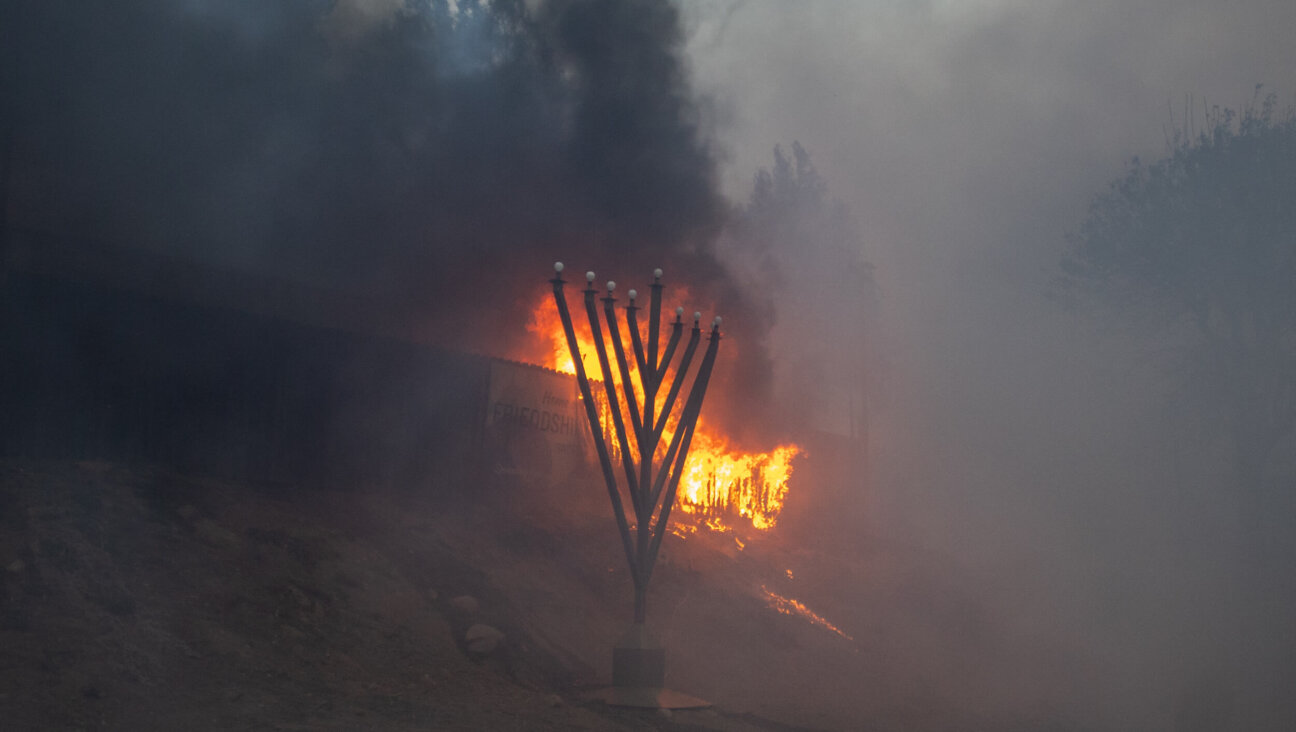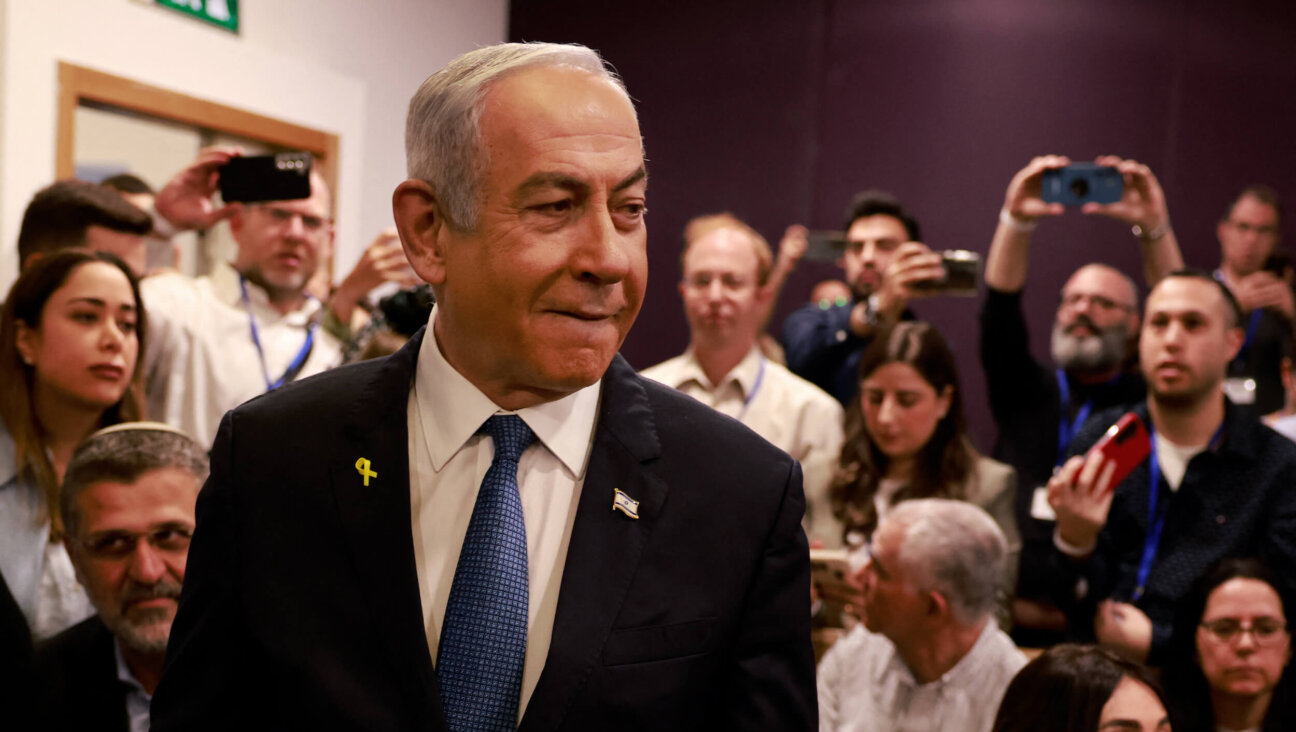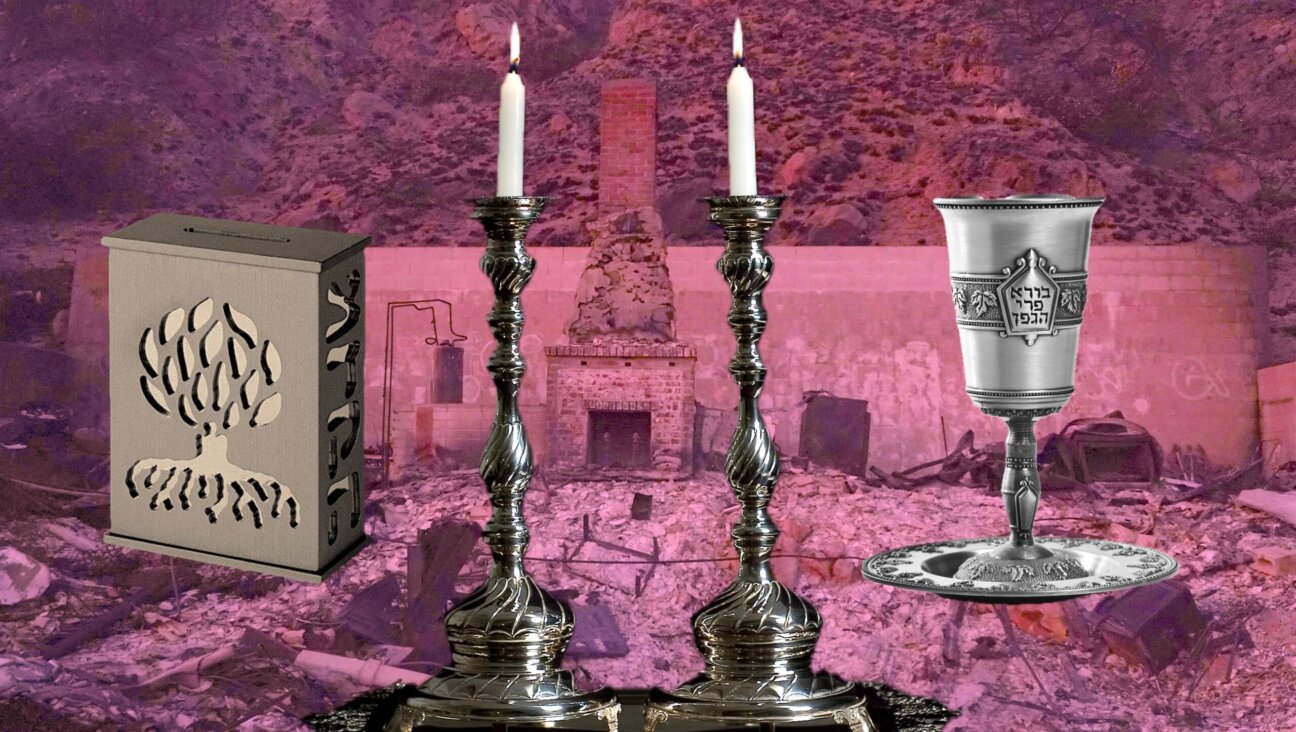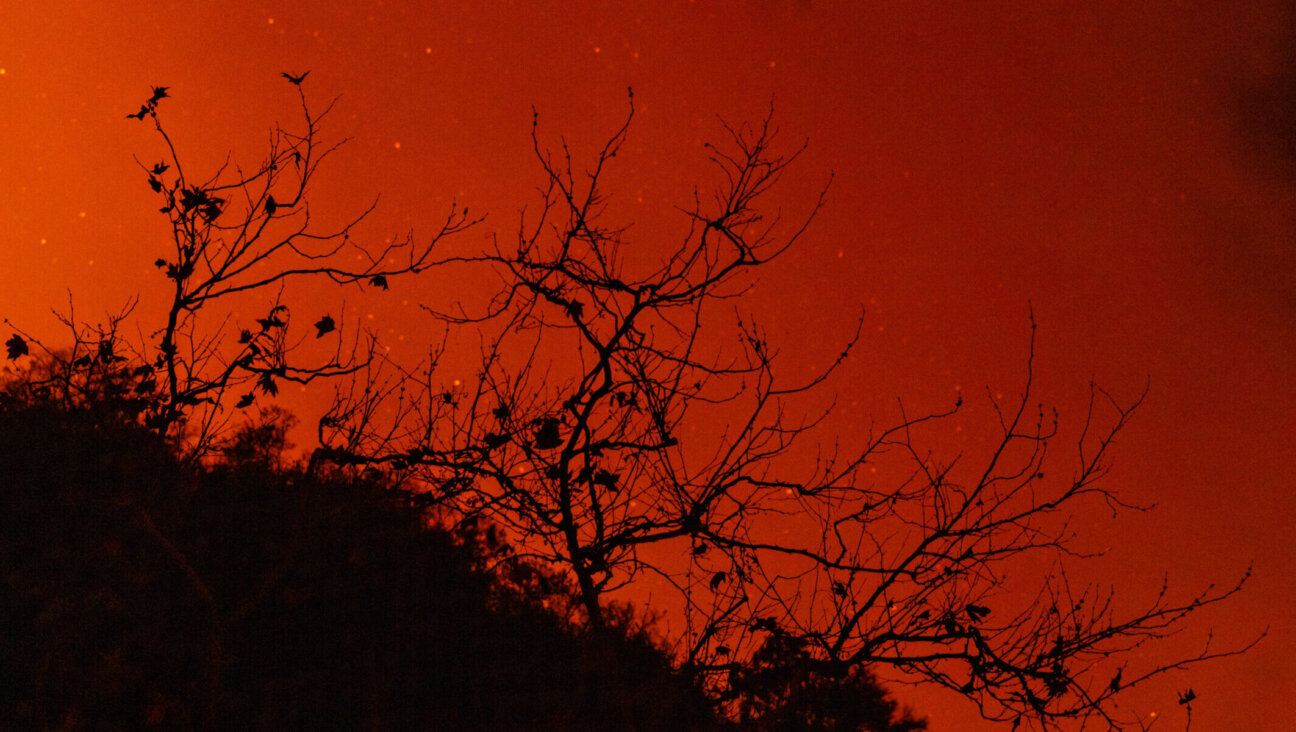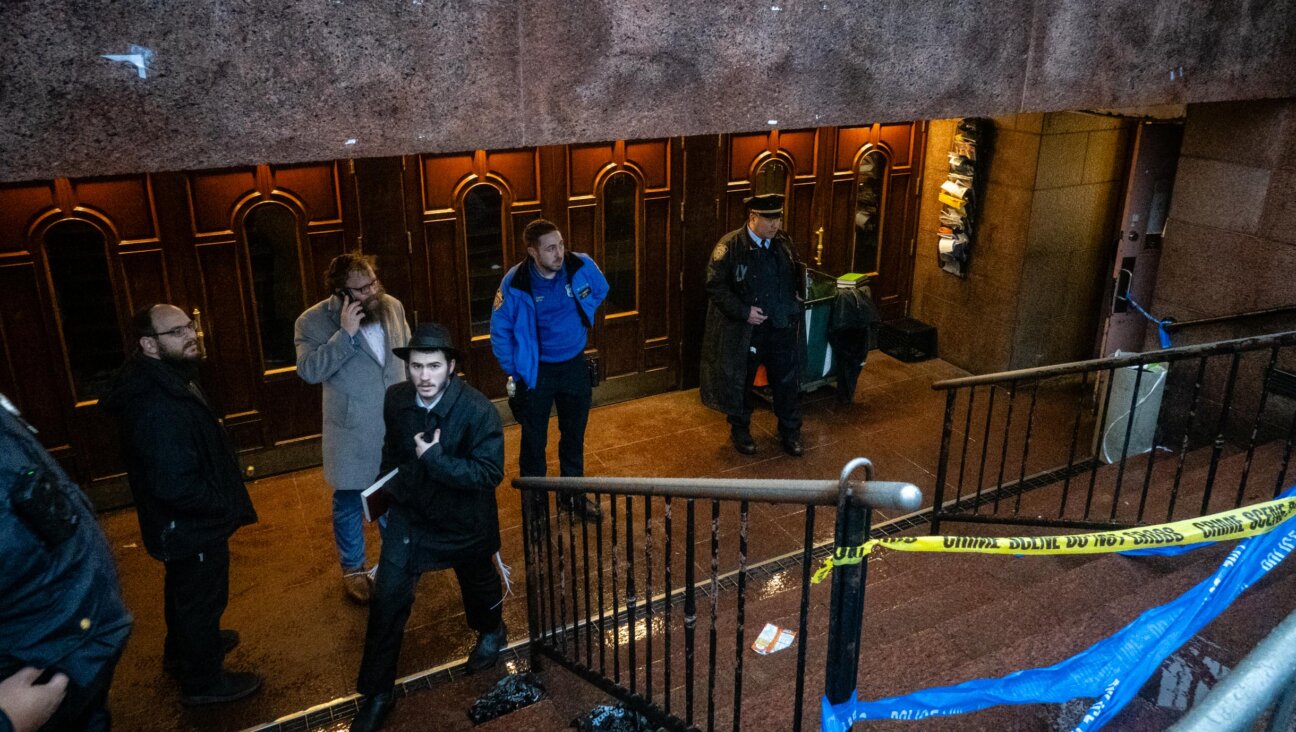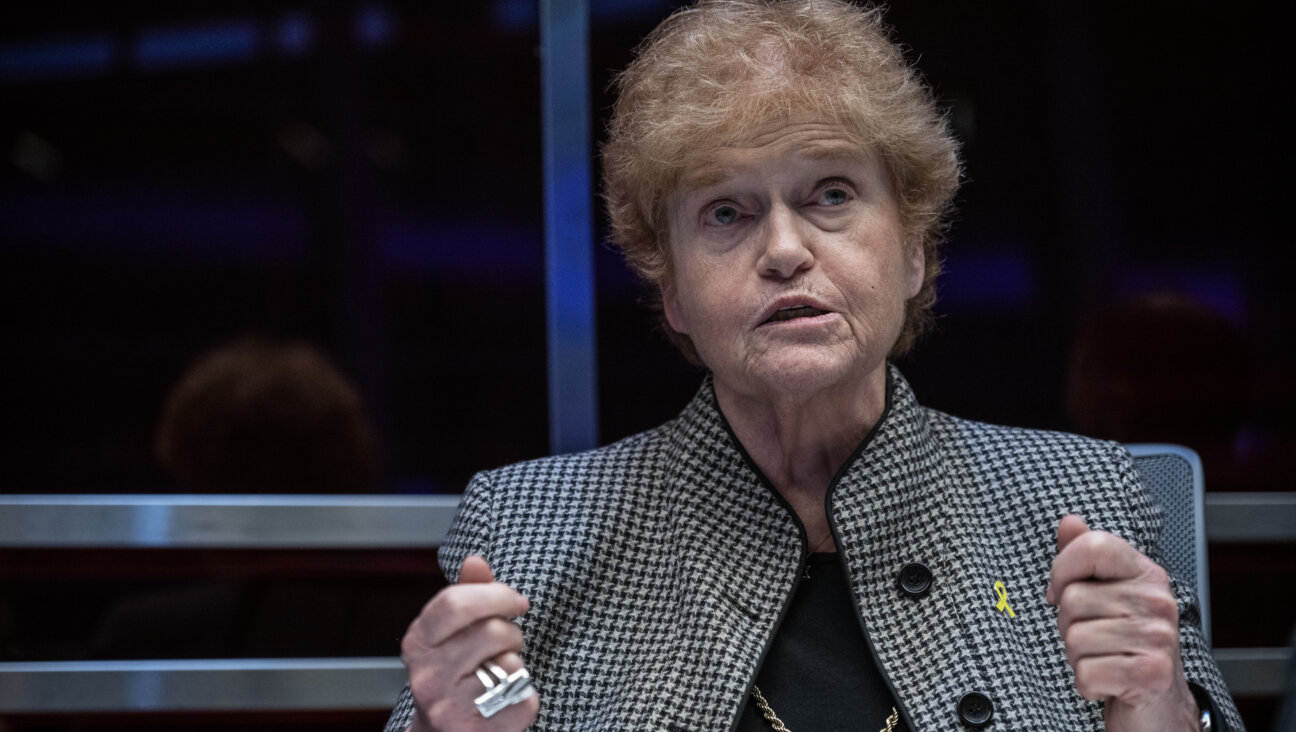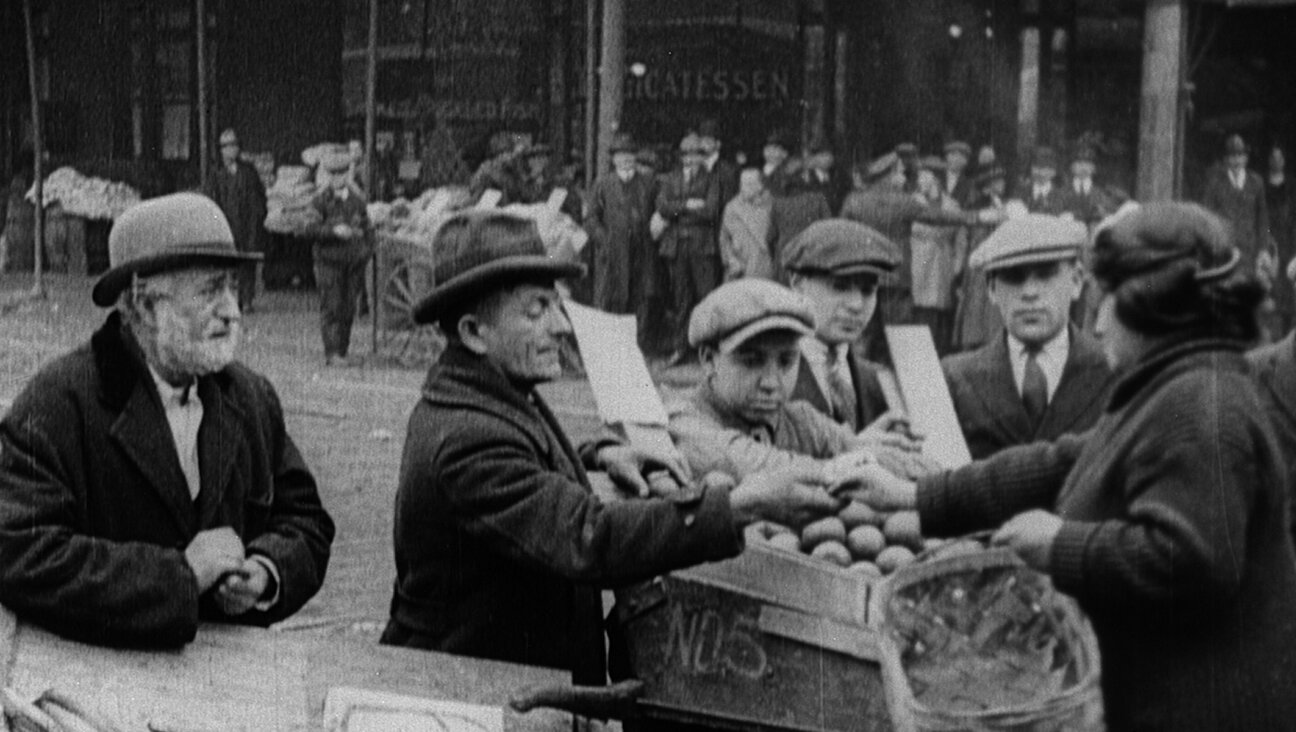It takes a village to create a nation’s memory

Hugo Spiegel and then-mayor Dr. Hans Kluck unveiling the memorial stone in 1970. An English translation of the inscription (which comes from Lamentations 1:16), reads, in part: Over these things I weep/ My eyes run with water/ Because Menachem is far from me. Courtesy of the town of Warendorf
In the early postwar years in the German town of Warendorf, no one contributed as much to facing the difficult past as Hugo Spiegel. He was not a learned man. He was Jewish, however. And his story tells us something important about how German communities confronted their history.
The central insight is that a country can’t face up to its past alone. Germans needed help from Jews who came back to their hometowns after the war.
Spiegel, who was born in the nearby town of Versmold in 1905, belonged to a long line of cattle traders, a typical profession of rural German Jews into the 20th century. Well-liked and respected by both Jews and Christians in Warendorf and the countryside around it, he felt a part of the community, even with the intensification of antisemitism after the Nazis seized power in 1933. But the violence and destruction of Kristallnacht, in November 1938, convinced Spiegel that Jews had no home in Germany, and he and his family fled to Brussels.

Hugo Spiegel and then-mayor Dr. Hans Kluck unveiling the memorial stone in 1970. An English translation of the inscription (which comes from Lamentations 1:16), reads, in part: Over these things I weep/ My eyes run with water/ Because Menachem is far from me. Courtesy of the town of Warendorf
When the Nazis invaded Belgium in 1940, they discovered the family’s hiding place, caught Hugo, and deported him. (The Nazis also caught Hugo’s first child, Rosa. His wife Ruth and son Paul escaped and survived by hiding in a village in Belgium.) Miraculously, Hugo survived Dachau, Buchenwald, and Auschwitz—the infamous camp where the Nazis ultimately took the life of his daughter when she was just 11 years old.
There are many remarkable stories of survival. We read fewer accounts of those who survived the Holocaust and then came back to their local communities in Germany. The Spiegels, without Rosa, returned to Warendorf and rebuilt a life, with Hugo Spiegel starting his cattle trading business once again.

Hugo Spiegel as “Champion Shot” by Leonard Freed. From the series “German Jews Today”, Warendorf 1961 – 1962; Jewish Museum Berlin, Inv. no. 2006/198/3 Courtesy of Jewish Museum Berlin
It would be easy to tell the story of how Spiegel’s postwar Warendorf chose to shut its eyes to the events of the Nazi period, especially in the first decades after the war. Yet in my research about how small towns in Germany eventually confronted the recent past, I have found that there is another story too. It is one of begrudging cooperation, of gradual acceptance, and of Jews and Germans eventually working together to commemorate the past.
The road to cooperation was a difficult one. In Warendorf, not everyone was happy about the Spiegels’ return. Hugo Spiegel did not shy from noting who had been a malicious Nazi and who not—and he had to fight tenaciously for years for the simplest commemorative gestures.
In 1946, Spiegel proposed to erect a stone that listed the names of the Jews who had been buried in the local cemetery, which local Nazis had destroyed in November 1938. But after two years of wrangling, the proposal was turned back. In 1953, he suggested establishing a memorial stone to recall “the Warendorf members of the Jewish community who died in the concentration camps.” For reasons difficult to discern, it, too, was refused.
Then, in 1960, Spiegel tried again, and began working towards a memorial to both the Jews who lay in the Warendorf cemetery and those “who died in the years 1933 to 1945.” Warendorf finally accepted the proposal in 1968. Two years later, in November 1970, a quarter century after the end of the war but early for such commemorations generally, the town unveiled the new memorial, with the mayor and Hugo Spiegel assuming center stage at the ceremony.
There were not many Jews like the Spiegels who came back to make their homes in the very towns where locals had jeered and howled with approval when the Nazis destroyed and desecrated synagogues. The Spiegels certainly remembered how Hitler’s stormtroopers wrecked the small synagogue on Freckenhorster Street, tearing up prayer books and Torah rolls, and tossing them on the street.
Most of the more than 200,000 Jews still alive in Germany when the Nazi government capitulated in April 1945 were from Eastern Europe, and by 1950 the vast majority of them had left the displaced person camps for the United States, Israel, and other countries. Only around 25,000 Jews remained in West Germany, and 2,000 in the East. Most were German-speaking and chose to live in big cities, where anonymity guaranteed a quieter life. Fewer returned to their erstwhile small towns, and in the general vicinity of Warendorf they probably numbered not more than a few hundred.
Interestingly, a lot of them were cattle traders, with genuine ties to the rural world. They included Hermann Michel, who survived Theresienstadt, and came back to his native Burgsteinfurt, where he ensured that the synagogue was commemorated early on; and Hans Frankenthal, a survivor of Auschwitz, Dora-Mittelbau, and Theresienstadt, who returned to the town of Schmallenberg, only to encounter a much more recalcitrant community in which old Nazis quickly occupied key positions and confidently told returning Jews, “One has to forget.”
But if we go beyond these noteworthy if infrequent cases of genuine returnees, we see that many Jews came back to visit hometowns in order to honor deceased parents and grandparents who died (one wants to say fortunately) before the horrors of the Holocaust began. As air travel became affordable in the 1970s, their numbers increased. And their first stop was typically the local cemetery.
In 1933, there were still some 1,700 Jewish cemeteries in Germany. In the 12 years after their seizure of power, Nazis desecrated or destroyed at least 80 percent of them. But most were only partly destroyed. In the postwar era, Germany remained the home of over a thousand Jewish cemeteries, their cracked and broken stones overgrown with weeds and brush. Neo-Nazis, hooligans, and ill-tempered and inebriated teenagers knew of them, and perpetrated hundreds of desecrations between 1945 and 1999. They desecrated some Jewish cemeteries numerous times—the cemetery in the small village of Randegg near Lake Constance in 1945, 1966, 1970, and 1986, for example.
Yet it was precisely when returning Jews gathered the courage to complain about the state of the cemetery in their home town, or to ask why there was no plaque or sign stating what had occurred during Kristallnacht, that something began to move among local people. This was often the moment that the work of commemoration began.
The local movers and shakers who sought to recognize the past were of different ages and occupations. They were schoolteachers, archivists working in a tiny office in the town hall, women from the preservation society, retired mayors and their wives who had time on their hands, idealistic high school students, and people who knew the Jews or family members who had come back. Their politics are not easy to pin down. Not a few Bavarians who reached out to returning Jews supported the Christian Socialist Union, one of Germany’s most conservative parties.

Courtesy of Zocalo Public Square
I have used this map to track when these communities put up a sign near the cemetery that told of the fate of the local Jews during the Holocaust, or a plaque noting where a synagogue once stood. The timelines show activity in the late ’40s (right after the Holocaust), followed by silence in the ’50s, the beginnings of work in the ’60s, a slowdown in the early ’70s, an uptick in the second half of that decade, and a commemorative explosion, starting in the early ’80s, and continuing thereafter.
In the midst of this commemorative explosion, in 1987, Hugo Spiegel died, and was buried in the very Jewish cemetery he had spent so many years trying to reconstitute. Three years later, largely on the initiative of its private citizens, the town erected a memorial stone for the synagogue and for the “Jewish citizens expelled, taken away, and murdered.” Caught up in what was now Germany’s pervasive culture of remembrance, Warendorf also renamed the small side-street leading to the synagogue “Hugo-Spiegel-Strasse.”
Historians sometimes attribute the impetus for these acts of remembrance to the famous trials (especially the Eichmann and the Auschwitz trials of the early ’60s) and, later, to the mini-series “Holocaust”, which aired in West Germany in 1979. But I am skeptical. In my investigations, I rarely read of local activists—those school teachers, archivists, and retirees—who mention being inspired by the miniseries (though some invoke the trials). Instead, I often see another logic at work.
Especially in the ’60s and ’70s, the fortuitous occurrence of German-Jewish cooperation, in this or that town, often made the difference. Sometimes an organization was behind it—the Society for Christian-Jewish Cooperation, for example. Sometimes, it was a Jewish émigré or survivor coming back, and striking up a conversation. The USC Shoah Archive, colloquially known as the Spielberg Archive, has many such stories of return (indexed as “post-conflict visits”), including testimonies of some German Jews who rejected such visits, and who simply could not fathom why others would want to go back and visit.
German-Jewish contacts increased in the ’80s and ’90s, as scores of towns and small cities began to stage so-called “visitor weeks.” Large cities, such as Frankfurt am Main, Stuttgart, and Hanover had been staging them since the ’60s, asking hundreds and hundreds of Jews to return. In the last two decades of the 20th century, many smaller places followed suite, and invited the surviving Jews, now living across the globe—from Buenos Aries to Pasadena, from Tel Aviv to Paris—back to their home towns in Germany. The towns also paid for the trips.
For a whole week Germans and Jews talked about what had occurred, what has happened since, how their kids were doing, and where to go shopping. Regional politicians, and sometimes even national ones, attended too. Typically, the mayor spoke, local notables offered their reflections, and writers read deeply felt poetry aloud. Visiting Jews also got up and gave speeches, usually offering words of reconciliation. As the town served coffee and cake, Germans and Jews who were once neighbors looked at old pictures, putting together the shards of what was once a genuine community. Photos and transcripts of the proceedings were published in the local newspaper, and sometimes reproduced, complete with lists of attendees, in small books.
If we can believe newspaper interviews and follow-up statements, most Jews were glad they went back to their German hometowns, just as the Germans in those towns were proud of the steps that their local communities had taken. Often after one town had its “visitor week,” other communities in the region soon followed, wishing not to be left behind. More teachers got involved, and more students—even the bored ones. Soon the very definition of Heimat, of home or hometown, changed. No longer was the history of town X or Hamlet Y thinkable without the Jews who once lived there, and the wrong that had been done to them.
By the ’80s and ’90s, there were also larger, national developments that pushed Germans to enter into their history more truthfully: country-wide essay contests on the subject of Germany and its past; the galvanizing effect of a president, Richard von Weizsäcker, whose measured, precise, and sensitive words helped a nation think more deeply about its own history; the constant drum of prominent politicians, publicists, philosophers, and historians reflecting on an “unmasterable past”; and another infamous anniversary in 1988, marking 50 years since the November Pogrom. Meanwhile, all manner of organizations, such as the History Workshop (Geschichtswerkstatt), had sprung up, urging communities to look more critically at their Nazi past.
When it’s finally written, a good history of how Germans faced their past will show the constant feedback between the local and the national. Actually, it will do more than that—for Germany’s past was hardly its own. The turn to an honest telling of the German past had long been a transnational undertaking, with foreign eyes observing it with keen interest for decades. In important respects, it was also a German-Jewish undertaking.
The story of Hugo Spiegel and his family is instructive. His son Paul did not follow his father into the business of cattle trading, but instead became a writer for the Jüdische Allgemeine, one of the most important Jewish newspapers in Germany. In 1993, Paul Spiegel would become a major figure in the Central Council of Jews in Germany, and in 2000 its president. In that year, he also helped found an organization against xenophobia, racism, and anti-Semitism: Gesicht Zeigen! Für ein weltoffenes Deutschland e. V.M The name translates as: “Show your Face: For a Germany Open to the World.” The people of Warendorf evidently approved. In 2001, the town publicly honored Paul Spiegel.
There are many lessons—local, national, and transnational—that we could learn from this German-Jewish story: the importance of community work, the necessity of reaching across divides, and the crucial role that local schoolteachers, archivists, retirees, hobby historians, and preservationists may well play in the great transformations of a nation’s memory.
After reading literally hundreds of accounts of towns from Bavaria and Baden in the south to Lower Saxony and Schleswig-Holstein in the north, I am especially impressed by the patience of these local actors. For it is they who put in the many years of work that often went into convincing town councils to repair a cemetery, put up a plaque, restore a synagogue, rename a street for a famous Jewish son or daughter, or add a monument in the central square of a hometown that had once wronged its former citizens. In many cases, they would also be the first to admit that they had help, and that the work of memory was not a German effort alone.
Another lesson is that, while tearing down hurtful monuments has its time, the necessary if arduous road of putting up the right monuments—fixing the wording on plaques, bringing histories together, commemorating forgotten victims and unsung heroes—runs through communities, town after town. It is a long road, and in the United States, it is still ahead of us.
Helmut Walser Smith is a historian at Vanderbilt University. His most recent book is Germany: A Nation in Its Time: Before, During, and After Nationalism, 1500-2000.
This essay was originally published in Zocalo Public Square and has been reposted with permission.
A message from our Publisher & CEO Rachel Fishman Feddersen

I hope you appreciated this article. Before you go, I’d like to ask you to please support the Forward’s award-winning, nonprofit journalism so that we can be prepared for whatever news 2025 brings.
At a time when other newsrooms are closing or cutting back, the Forward has removed its paywall and invested additional resources to report on the ground from Israel and around the U.S. on the impact of the war, rising antisemitism and polarized discourse.
Readers like you make it all possible. Support our work by becoming a Forward Member and connect with our journalism and your community.
— Rachel Fishman Feddersen, Publisher and CEO







